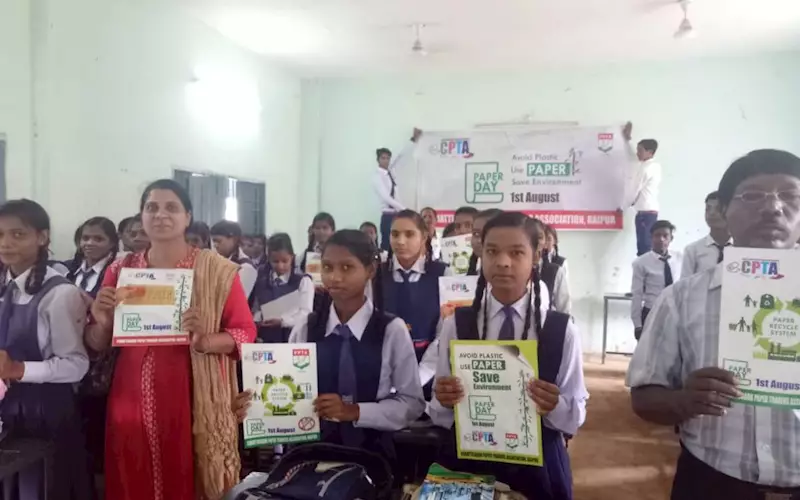Does paper really endanger the environment?
Alok Gupta of the FPTA says, the history of paper dates back 2,000 years. There are a number of myths related to the production of paper which need to be uncovered.
30 Jul 2018 | By Amogh Dikshit
Man-made paper
In the good old days, the paper was produced using old textiles, leaves of the trees. These leaves and textiles were later crushed, ground and a pulp was made out of it. Paper was produced using this pulp.
Production of paper does not necessarily have to endanger the environment since, 75% of paper produced in India is produced by recycling the old paper, and using wheat husk, rice tudi, sugarcane harvest, etc. This means less than 25% of paper is produced using wooden pulp.
The wood used for producing paper is not only acquired from authorised forests, but also paper mills invest in captive lands to grow trees, so that these trees can be tapped for producing paper.
Like sugar mills, which produce sugar to cut sugarcane plants, extract sugar out of it and plant a new sugarcane crop. Similarly, the paper mills aim to plant trees that are cut and replace the trees which are cut to produce paper.
In case it cuts one tree, the thumb rule is, plant two trees. Hence, there is an increase in the number of trees. As a result, the oxygen levels in the air increase. Also, this is Green Revolution 2.0 in India.
Due to the lack of knowledge, many people and organisations have incorrect ideologies about the production of paper. The truth is:-
Paper mills plant new trees in order to produce paper. The paper industry also plays an important role in fulfilling the three national objectives of education, increasing literacy rate and employment generation in rural areas. Various paper bodies are organising half-day paper appreciation events which are ideal for employees in paper merchanting and printing that have not had the chance to visit a fully working paper mill. The idea is to take a tour around the paper mill and grasp the green-friendly process
Paper is eco-friendly as it can be recycled to produce new paper as well. Using paper to read and write is not only better for the environment, but also better for the health of the human beings instead of using digital media like computers, tablets, etc. Paper is biodegradable as well as can be recycled to produce new paper. Almost the entire paper industry in India has taken precautions to preserve the environment.
Since the past month, the print and paper industry is teaching consumers about sustainability in paper and not to be fooled by environmental claims around digital communication. It's a simple truth. If you send 20 emails a day over a year, you are effectively generating enough CO2 into the environment as you would if you drove 1,000km. It’s a hidden cost; there are all sorts of other stats and studies that support this and we want to try to bring some balance to the conversation.
The FPTA is actively sharing literature and video links, from a range of sources, about recycled paper and sustainability and digital energy usage statistics with our customers in an effort to educate them. We request you to share the message further.
A host of companies, Indian and international, have made pledges to reduce their plastics packaging in the coming years. Some state governments, have already made significant strides in tackling the issue. Point is, people want to see less plastic and the industry is listening. By economies of scale, the alternatives will become more cost-effective in time – the technology is already there.
Today paper occupies an environmentally friendly position. Which is why there should be much more awareness about the use of paper. Simply because there are a number of myths regarding the use of paper and very few know the truth about it.
(This article was translated from Hindi to English by Shrinath)














 See All
See All